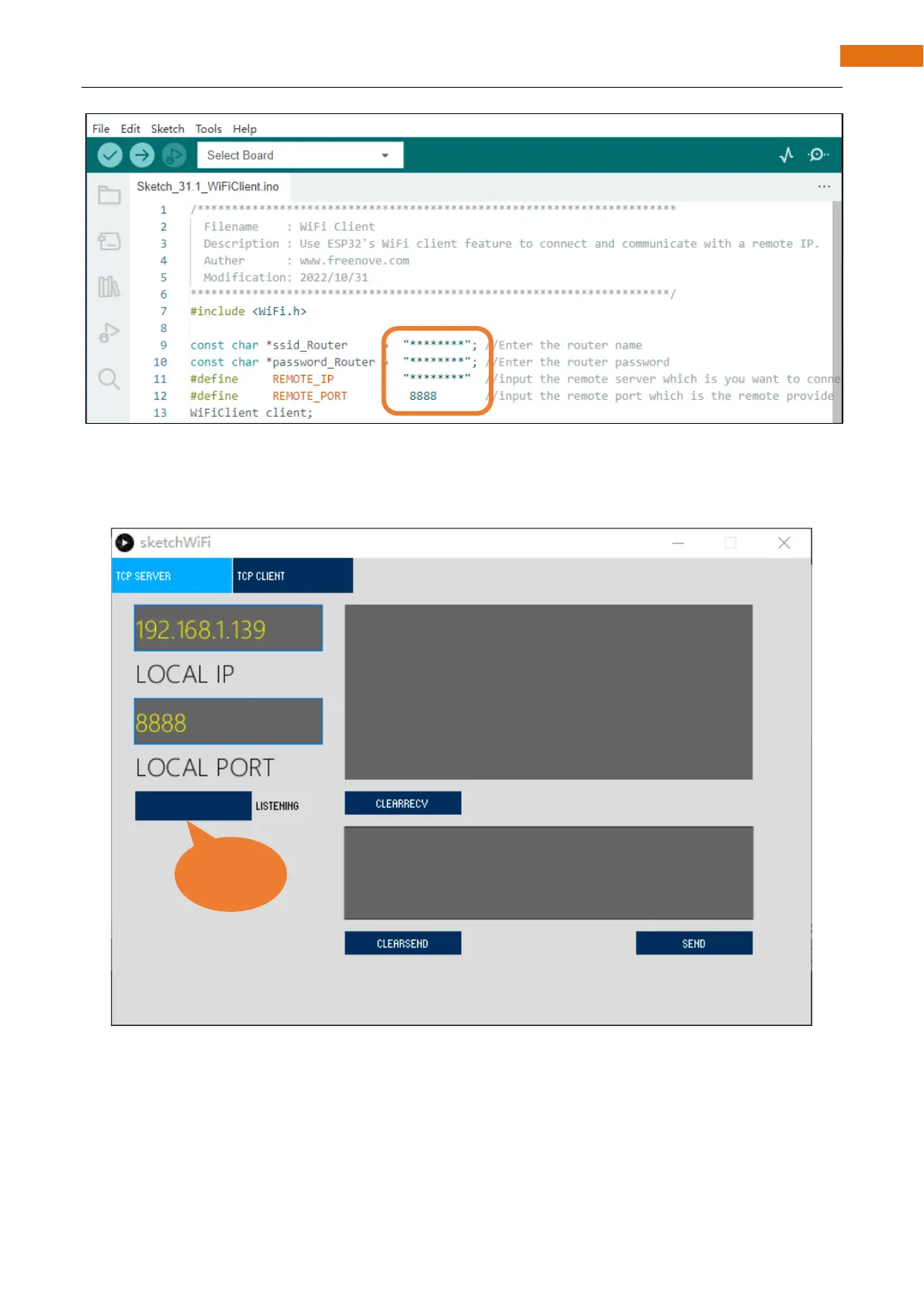REMOTE_IP needs to be filled in according to the interface of sketchWiFi.pde. Taking this tutorial as an
example, its REMOTE_IP is “192.168.1.133”. Generally, by default, the ports do not need to change its value.
Click LISTENING, turn on TCP SERVER's data listening function and wait for ESP32-S3 to connect.
Compile and upload code to ESP32-S3 WROOM, open the serial monitor and set the baud rate to 115200.
ESP32-S3 connects router, obtains IP address and sends access request to server IP address on the same LAN
till the connection is successful. When connect successfully, ESP32-S3 can send messages to server.
